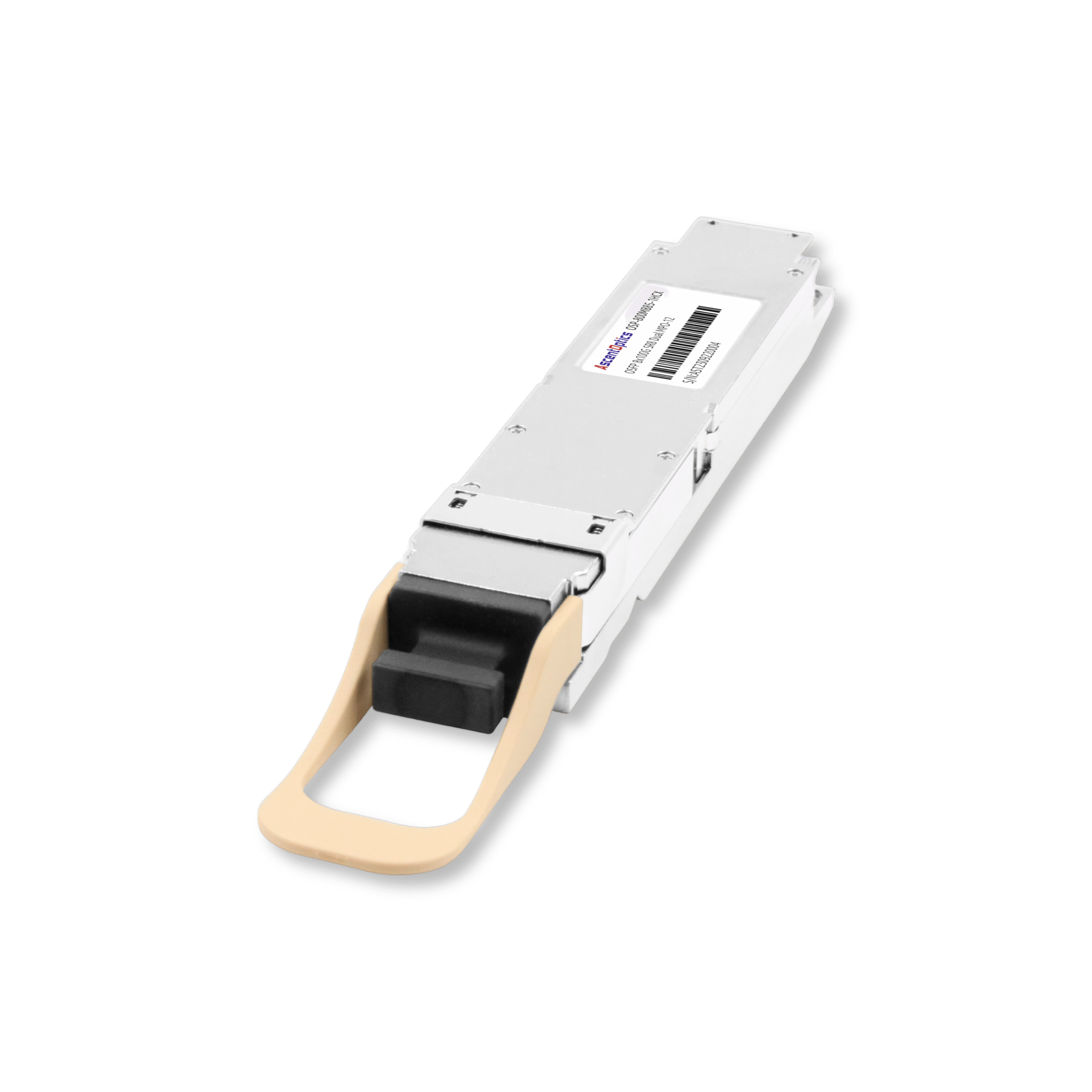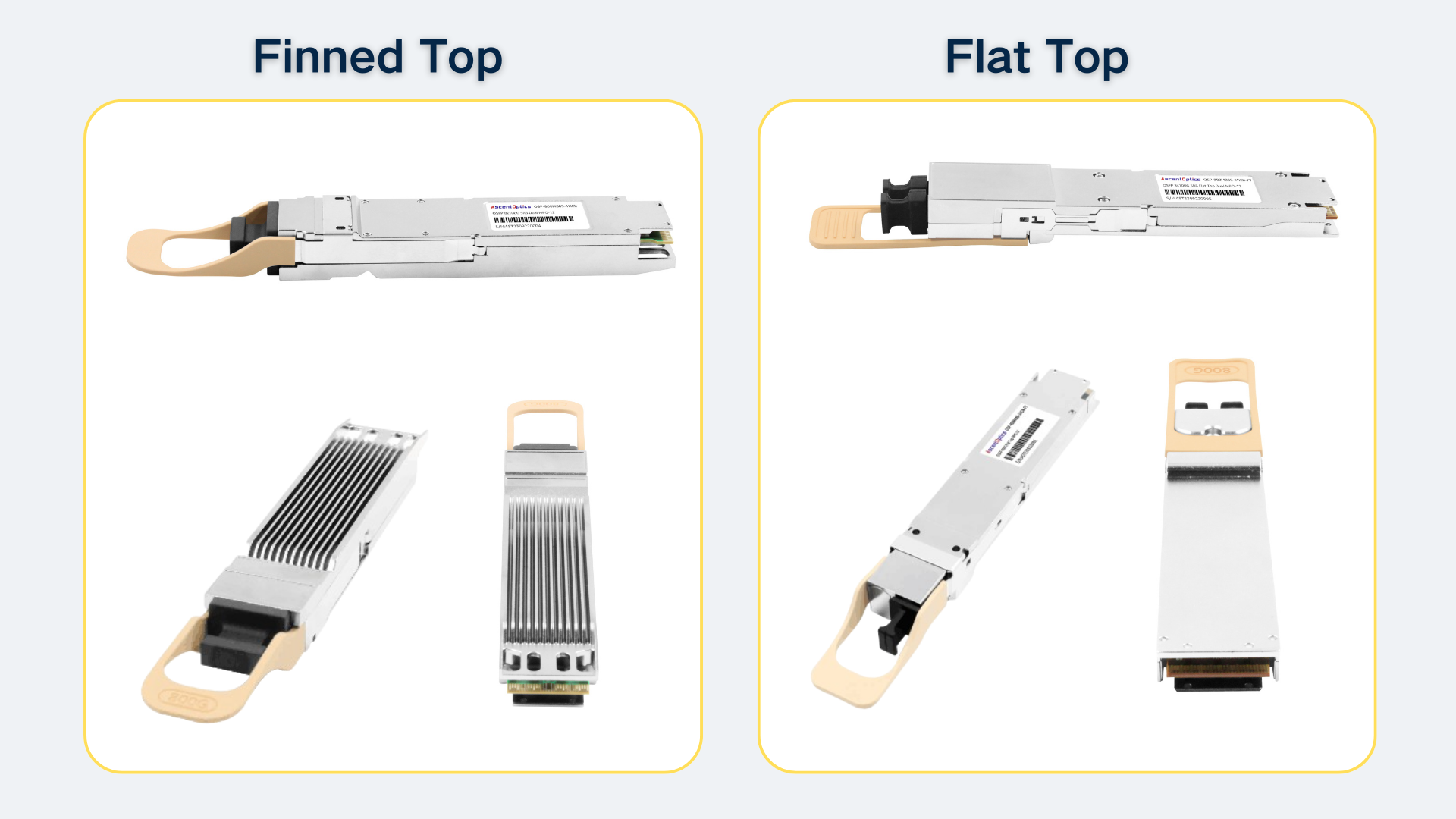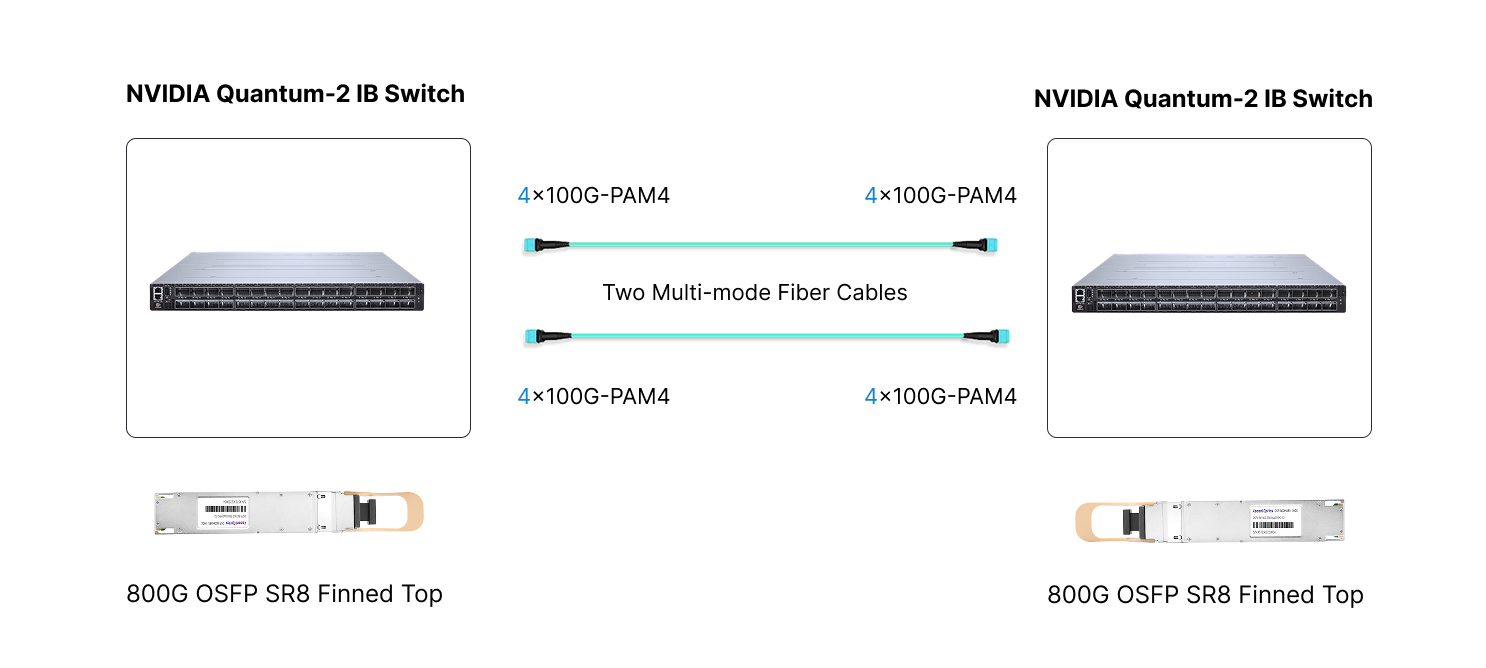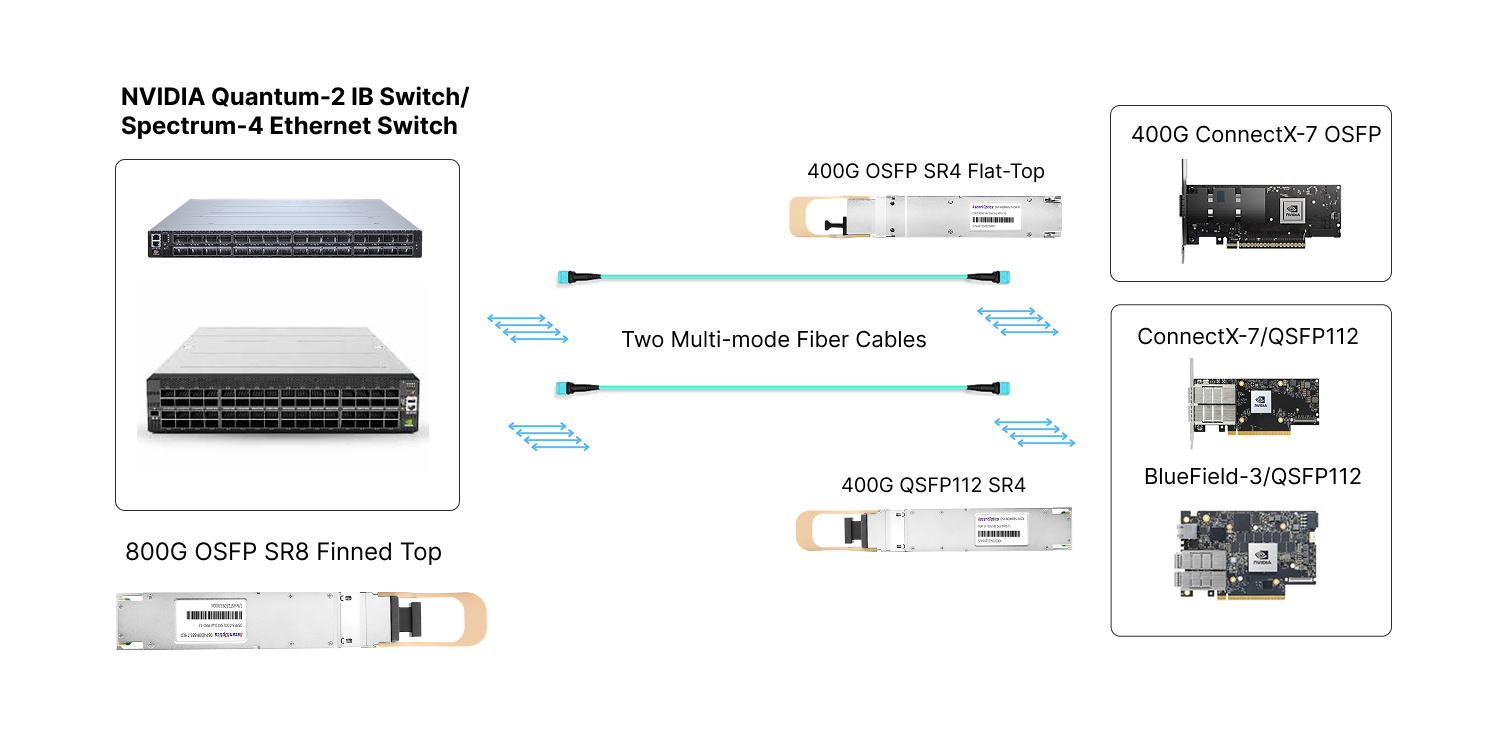With the rapid development of AI, large-scale GPU clusters, and high-performance computing (HPC) applications, the demand for intra-data center interconnect bandwidth is growing exponentially. To support high-speed, low-latency data transmission, the 800G OSFP SR8 optical module has emerged. It not only meets the requirements of ultra-high bandwidth but also delivers low power consumption and high reliability in short-reach interconnects, making it a core interconnection solution for modern AI clusters and hyperscale data centers.

The 800G OSFP SR8 optical module is designed specifically for short-reach high-speed interconnects. It operates in 2×400G SR4 or 800G SR8 modes, utilizing 850nm VCSEL lasers and PAM4 modulation, with a transmission distance of up to 50 meters over OM4 multimode fiber. The module features dual MPO-12/APC connectors, is compatible with InfiniBand NDR networks, and supports high-speed interconnection within high-performance computing (HPC) clusters, AI training clusters, and hyperscale data centers.
The Broadcom DSP (Digital Signal Processor) serves as the core component of the optical module, enabling high-speed PAM4 modulation and demodulation while supporting 800G (8×100G) parallel channels. This advanced architecture is capable of handling massive data streams to ensure efficient transmission. It also integrates FEC (Forward Error Correction), which enhances link reliability and significantly reduces the bit error rate, thereby ensuring stable transmission in high-bandwidth AI and InfiniBand networks. In practical applications, this means that even in complex data center environments, reliable performance can be maintained.
In addition, the Broadcom DSP offers the advantages of low power consumption and low latency, perfectly meeting the ultra-low latency interconnect requirements of AI training. This design not only optimizes energy efficiency but also reduces signal processing time, helping users build more efficient computing infrastructures. At the same time, it supports real-time monitoring and diagnostic functions (DOM), covering parameters such as temperature, voltage, optical power, and alarm information, enabling intelligent operation and maintenance in data centers. With these features, the Broadcom DSP has become an indispensable element in modern network architectures.
The Broadcom VCSEL (Vertical-Cavity Surface-Emitting Laser) stands out for its efficiency, stability, and low power consumption. It adopts a mature 850nm VCSEL process, ensuring stable performance in short-reach transmission. Having been optimized over many years, this process delivers reliable optical signal output under a wide range of conditions.
The excellent coupling efficiency and temperature stability of VCSELs further enhance their value, ensuring consistency in large-scale module deployments. This means that during data center expansion, users do not need to worry about performance fluctuations. When combined with a DSP, VCSELs deliver an ideal balance of low power consumption, cost-effectiveness, and scalable deployment, making them well-suited for diverse network requirements.
The combination of Broadcom DSP and VCSEL strikes a balance between high performance, low power consumption, and cost efficiency. This integrated design is particularly well-suited for short-reach high-speed interconnect scenarios, making it an ideal choice for AI, data centers, and InfiniBand networks. With this solution, users can build interconnect systems that are efficient, reliable, and cost-effective, thereby accelerating the progress of digital transformation.
AI/GPU Cluster Interconnect
High-Performance Computing (HPC)
Hyperscale Data Centers (Hyperscale DCs)
Cloud Computing and Storage Networks
The Flat Top and Finned Top designs are two common housing types for optical modules (transceivers) used in high-speed applications such as 400G/800G. The main differences lie in thermal management and suitable deployment scenarios. While their internal structures are similar, their external designs vary to accommodate different equipment and cooling requirements. The following sections will explain their differences in several aspects:

Flat Top: The module features a flat metal top cover. Heat dissipation mainly relies on the chassis or built-in airflow and heat sinks of the switch, providing moderate cooling capability. It is suitable for lower-power modules or environments with good cooling. Power consumption is generally lower (for example, in 800G modules, it may be lower than that of Finned Top designs).
Finned Top: The module features an integrated metal finned top (similar to a small heat sink), which improves air convection cooling efficiency and is suitable for higher-power modules. The built-in fins enhance natural convection and thermal radiation, providing superior heat dissipation, making it ideal for high-power applications (e.g., 12–16W in 800G modules). This design ensures greater stability in high-temperature environments but increases the module’s own thermal load.
Flat Top: Commonly used in network cards, data processing units (DPUs), or other space-constrained devices. It is suitable for moderate thermal load environments, such as edge devices in data centers.
Finned Top: Better suited for switches and other high-density, high-heat devices that require enhanced built-in cooling, such as in core networks or high-performance computing environments.
Power and Compatibility: Finned Top modules typically support higher power, but device ports must accommodate their additional height. Flat Top modules are more versatile, though their performance may be limited under extremely high-temperature conditions.
For short-reach applications (such as 800G OSFP SR8/SR4, commonly used in AI clusters and inter-rack connections in data centers), Flat Top is more suitable, offering better cost-effectiveness and higher density. For medium- to long-reach applications (FR4/LR4/ZR, higher-power modules) or HPC/AI scenarios with strict thermal requirements, Finned Top is more reliable and provides superior heat dissipation.
1. 800G NDR Switch to 800G NDR Switch
For interconnection between two 800G NDR switches, two 800G OSFP SR8 modules can be directly linked using an MPO-12 APC to MPO-12 APC OM4 multimode fiber cable, establishing a high-speed 800Gb/s link.

2. 800G NDR Switch to 2×400G NDR HCA
For interconnection between an 800G NDR switch and two 400G NDR HCAs, one 800G OSFP SR8 module and two 400G OSFP SR4 modules can be connected via an MPO breakout cable, splitting a single 800G link into two independent 400G links, enabling hybrid deployment and flexible expansion.

3. 2x400G to 400G Links
For interconnection between an 800G IB/EN switch and two ConnectX-7 or BlueField-3 devices, the switch side uses an 800G OSFP SR8 module, while the device side can use either two 400G OSFP SR4 modules or two 400G QSFP112 SR4 modules. The connection is achieved via an MPO breakout cable, splitting one 800G link into two independent 400G links. This solution delivers high-speed, low-latency connectivity while ensuring compatibility across different device generations, enabling smooth upgrades and flexible network expansion.

In summary, the 800G OSFP SR8 optical module, leveraging the core technologies of Broadcom DSP and VCSEL, achieves a perfect balance of high bandwidth, low power consumption, and low latency. It serves as the preferred solution for interconnects in AI clusters, high-performance computing, and hyperscale data centers. As data demands continue to explode, this module will empower network infrastructure to evolve towards higher speeds and greater efficiency, ushering in a new era of digital transformation.